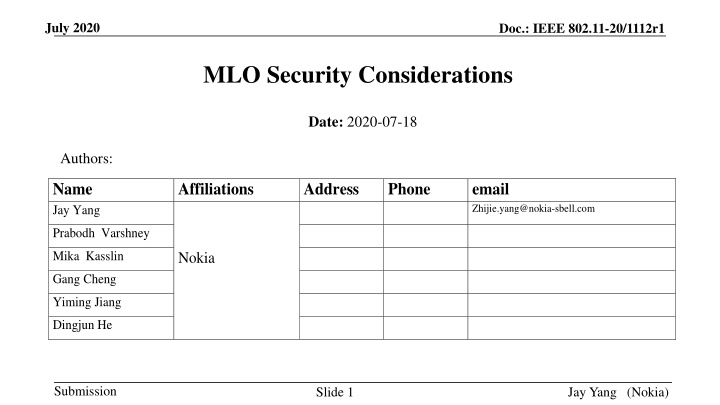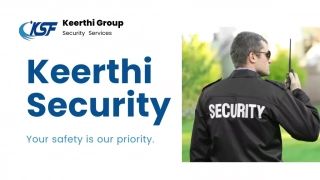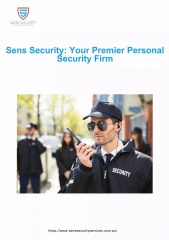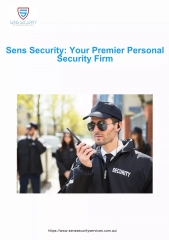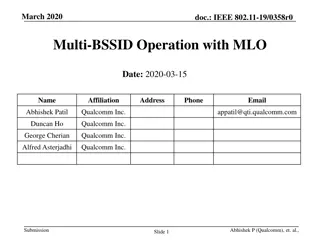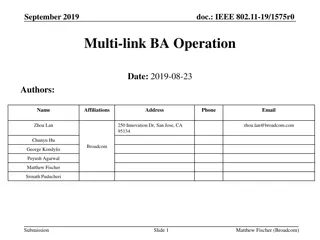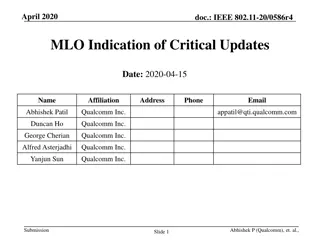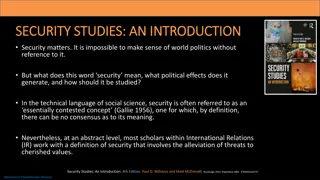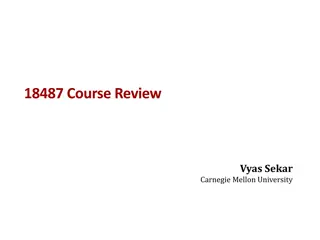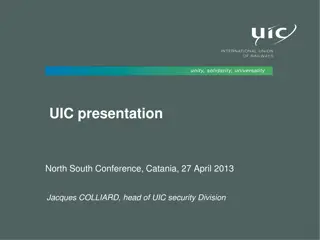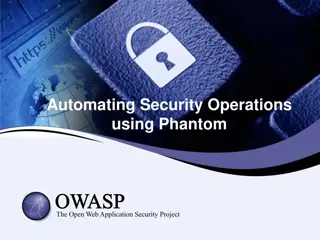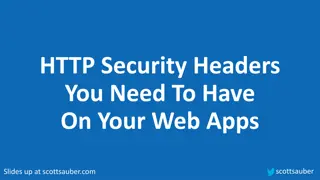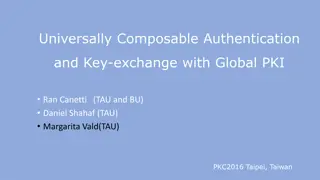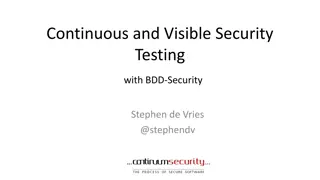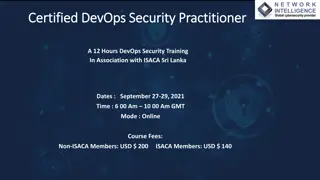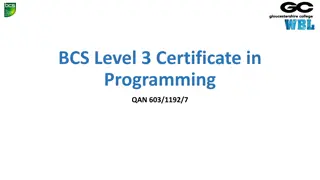MLO Security Considerations
The document discusses security issues in IEEE 802.11 protocols, proposing new methods to enhance security, fix vulnerabilities, and improve key exchange processes among different devices in a network.
Download Presentation

Please find below an Image/Link to download the presentation.
The content on the website is provided AS IS for your information and personal use only. It may not be sold, licensed, or shared on other websites without obtaining consent from the author.If you encounter any issues during the download, it is possible that the publisher has removed the file from their server.
You are allowed to download the files provided on this website for personal or commercial use, subject to the condition that they are used lawfully. All files are the property of their respective owners.
The content on the website is provided AS IS for your information and personal use only. It may not be sold, licensed, or shared on other websites without obtaining consent from the author.
E N D
Presentation Transcript
July 2020 Doc.: IEEE 802.11-20/1112r1 MLO Security Considerations Date: 2020-07-18 Authors: Name Jay Yang Affiliations Nokia Address Phone email Zhijie.yang@nokia-sbell.com Prabodh Varshney Mika Kasslin Gang Cheng Yiming Jiang Dingjun He Submission Slide 1 Jay Yang (Nokia)
July 2020 Doc.: IEEE 802.11-20/1112r1 Background With lots of security protocols been defined to supply a safer method to protect user info, there is still no solution to the de-auth attack issue even though IEEE has defined the 802.11w/PMF protocol. That s because: 1. The PMF protocol only works under the precondition that both STA and AP support it. 2. Many STAs do not support 802.11W in default. 3. Many legacy IOT devices will not send Associate Request frame if the AP set PMF capable flag in Beacon and Probe Response frame. Therefore, to be compatible with legacy IOT devices, the AP do not support the PMF protocol by default. Reference[2] mentioned another attack type in which the MAC address was replaced with other values during the association process. If three links (on 2.4GHz, 5Ghz and 6GHz) of MLD AP are configured in WPA2-PSK mode, the end user will not be able to input the password three times to set up three links on MLD STA. Submission Slide 2 Jay Yang (Nokia)
July 2020 Doc.: IEEE 802.11-20/1112r1 Proposal An open question: Is it necessary to repeat the Auth/Assoc and 4-way handshake procedure on each link of MLD devices? It is known that EAPOL frame exchange in legacy data rate is not able to meet the low latency requirement of 802.11be in some scenarios. In this presentation, we want to talk about a safer and faster key exchange method for each link (exclude the first link) once the first link has been set up. This method is compatible with legacy devices, and can fix the two attack types mentioned above. Submission Slide 3 Jay Yang (Nokia)
July 2020 Doc.: IEEE 802.11-20/1112r1 Solution We would like to define some new service primitives similar to TDLS primitives: MLME-LINK-SETKEY-REQUEST,MLME-LINK-SETKEY-RESPONSE, MLME-LINK-TEAR-DOWN. MLME-LINK-SETKEY-REQUEST: This primitive requests that an MLD AP send a set key request frame containing [Link ID, cypher type, TK, GTK ] to an MLD STA. MLME-LINK-SETKEY-RESPONSE: This primitive requests that an MLD STA use MLME-SETKEYS.primitive to install TK and GTK on the MAC of link-x and then sent a set key response frame containing [Link ID, key install status] to the MLD AP. MLME-LINK-TEAR-DOWN: This primitive requests that a link tear down frame containing [Link ID, tear down reason code] be sent to the MLD peer device. These new service primitives are characterized by encapsulating set key frames and a tear down frame in Data frames, allowing them to be transmitted through the first link transparently. Submission Slide 4 Jay Yang (Nokia)
July 2020 Doc.: IEEE 802.11-20/1112r1 MLD STA MLD AP Auth/Assoc Procedure Link Set Up and Tear Down Sequence Chart 802.1X,WPS or other OOB authentication Establishment procedure of the first link 4-way handshake obtain IP address: DHCP or static MLD Link Set Key Request frame Establishment procedure of other links MLD Link Set Key Response frame Tear down procedure of other links MLD Link Tear down frame Submission Slide 5 Jay Yang (Nokia)
July 2020 Doc.: IEEE 802.11-20/1112r1 MLME MLME SME SME The diagram on the right shows the link establishment procedure of the MLD device with MLME primitives. Note: this is only an example of the basic procedure. MLME-SETKEY REQUEST.req MLME-SETKEY REQUEST.ind MLD Link Set Key Request frame MLME-SETKEY REQUEST.cfm MLME-SETKEY RESPONSE.ind MLME-SETKEY RESPONSE.req MLD Link Set Key Response frame MLME-SETKEY RESPONSE.cfm MLD STA MLD AP MLD Link Establishment Submission Slide 6 Jay Yang (Nokia)
July 2020 Doc.: IEEE 802.11-20/1112r1 In order to protect the link from de-auth attacks, we propose to use Link Tear Down primitive to replace conventional De-auth or Dis-assoc frame if any side decides to disconnect the link. MLME MLME SME SME Link Tear down frame MLME- TEARDOWN.req MLME- TEARDOWN.ind MLME- TEARDOWN.cfm The diagram on the right shows the link tear down procedure of the MLD device with MLME primitives. MLD STA/AP MLD AP/STA MLD Link Teardown Submission Slide 7 Jay Yang (Nokia)
July 2020 Doc.: IEEE 802.11-20/1112r1 The format in data frame 802.11MAC header Ethernet type: MLD MLD LINK ID Status Primitive ID KEY Info 802.11MAC header Ethernet type: MLD MLD LINK ID Status Primitive ID KEY Info AMPDU AMPDU AMPDU Submission Slide 8 Jay Yang (Nokia)
July 2020 Doc.: IEEE 802.11-20/1112r1 Summary Proposal to define a safer and faster key exchange method in 802.11be SPEC to tackle two attack types. To define new primitives and describe the implementation method(s) to realize the above target. Submission Slide 9 Jay Yang (Nokia)
July 2020 Doc.: IEEE 802.11-20/1112r1 References [1] IEEE 802.11-19/1900r0 MLA MAC Addresses Considerations [2] IEEE 802.11-20/0727R0 MLA: MAC Addresses Security [3] IEEE 802.11z Extensions to Direct-Link SETKEY(DLS) [4] IEEE 802.11i Medium Access Control(MAC) Security Enhancement . Submission Slide 10 Jay Yang (Nokia)
July 2020 Doc.: IEEE 802.11-20/1112r1 SP 1 Do you agree to complete the key delivery (or exchange) on the first link of the two MLD devices rather than repeating the 4-way handshake procedure on each link? Submission Slide 11 Jay Yang (Nokia)
July 2020 Doc.: IEEE 802.11-20/1112r1 SP 2 Do you agree to define a mechanism in 802.11be SPEC to address the two attack types mentioned in page2? Submission Slide 12 Jay Yang (Nokia)
July 2020 Doc.: IEEE 802.11-20/1112r1 SP 3 Do you agree to define the following service primitives to achieve the safer and faster key exchange end?(the primitive language can be further talk) MLME-LINK-SETKEY-REQUEST, MLME-LINK-SETKEY-RESPONSE, MLME-LINK-TEAR-DOWN Submission Slide 13 Jay Yang (Nokia)
July 2020 Backup-1:De-auth attacks were found in Nokia Seattle office Doc.: IEEE 802.11-20/1112r1 Submission Slide 14 Jay Yang (Nokia)
July 2020 Doc.: IEEE 802.11-20/1112r1 Backup-2: Time costs of different certification types Security mode Open Connection procedure Authentication+Association Time cost 5ms WPA/WPA2+PSK Authentication+Association +Four way handshake 80ms WPA/WPA2+802.1X Authentication + Association +802.1x+ Four way handshake 230ms 802.11R fast roaming Authentication + Re- Association 50ms Submission Slide 15 Jay Yang (Nokia)
